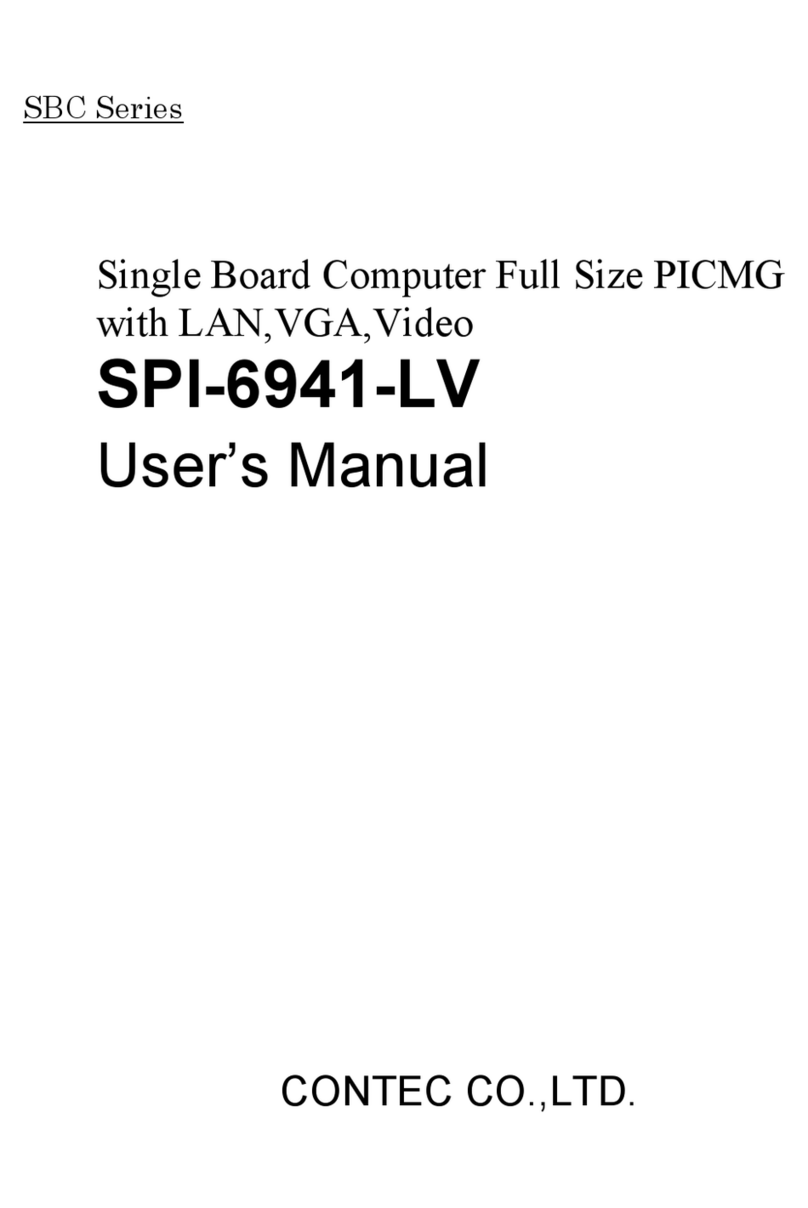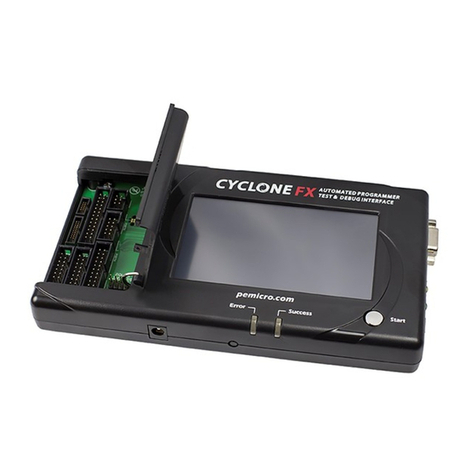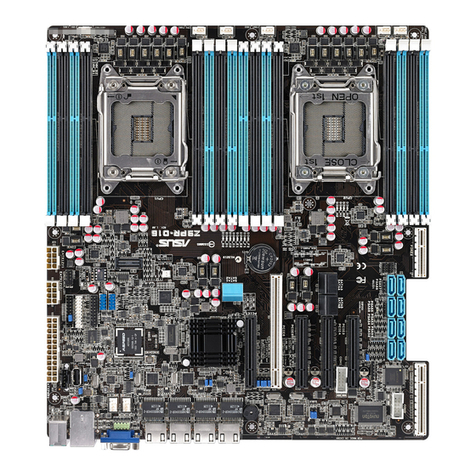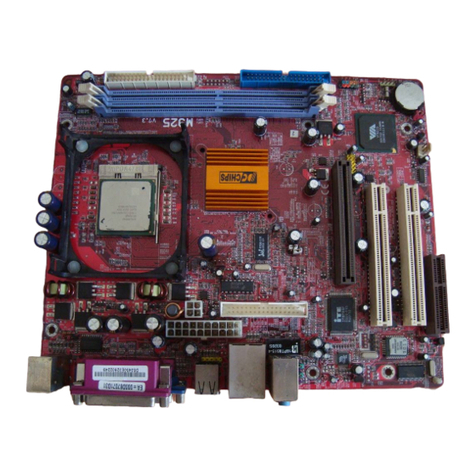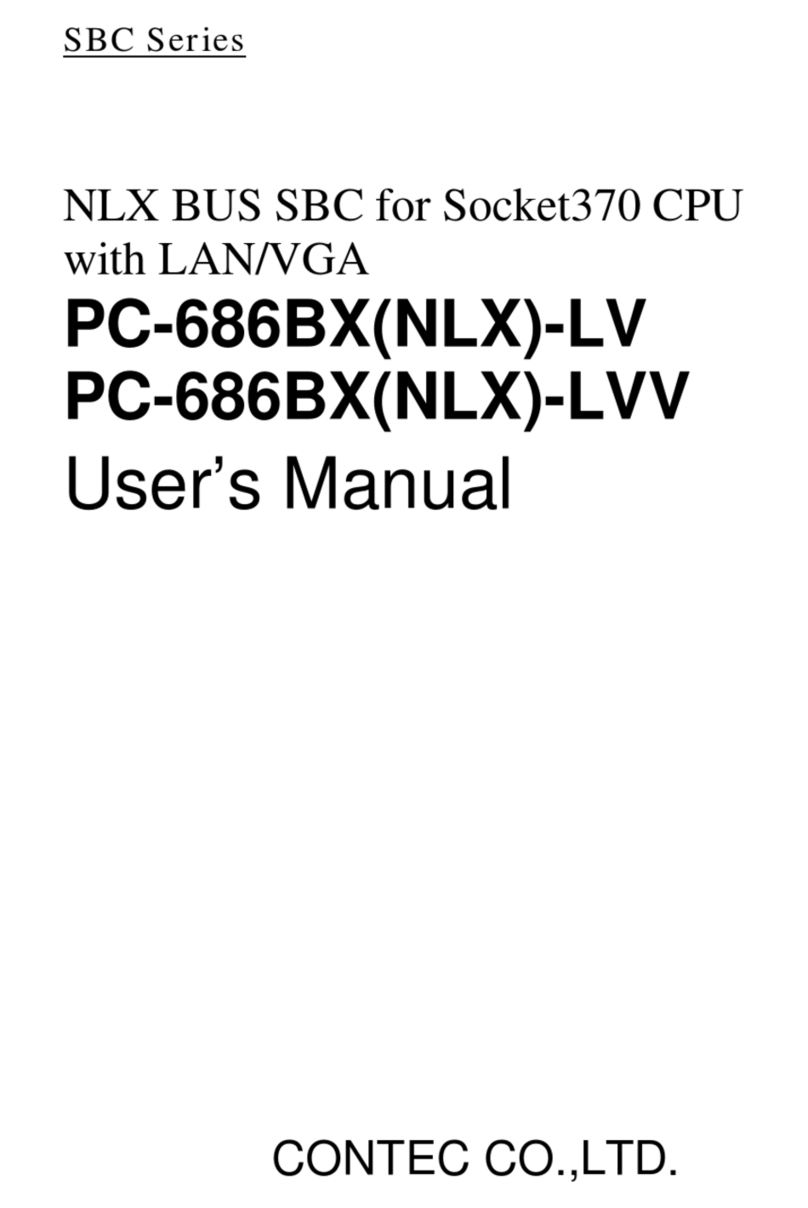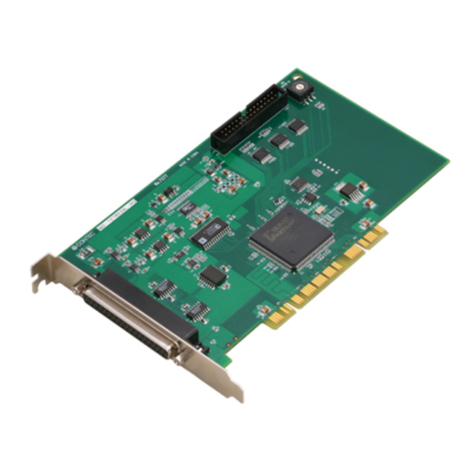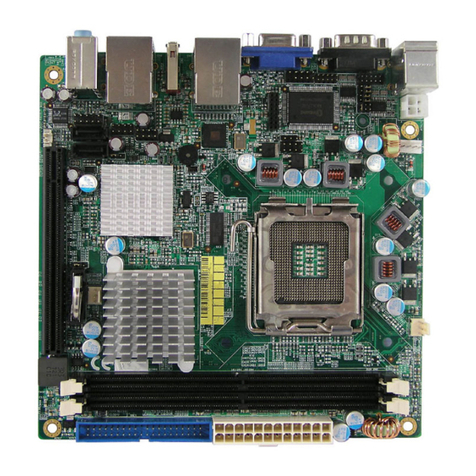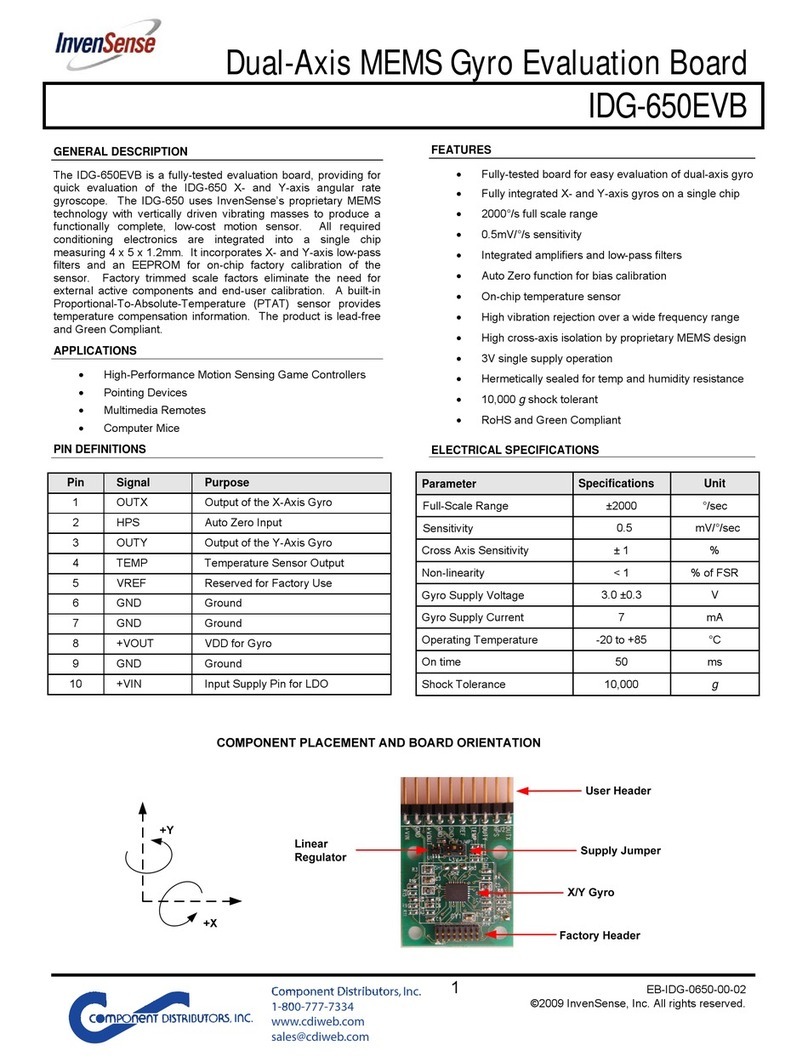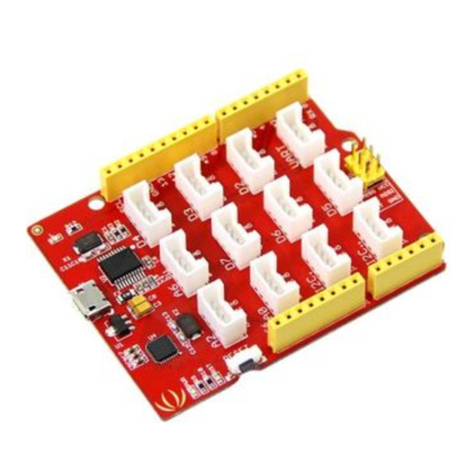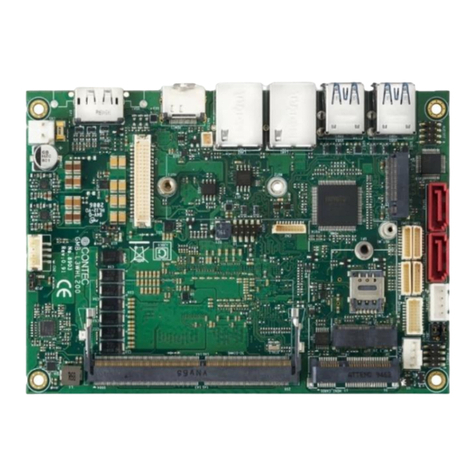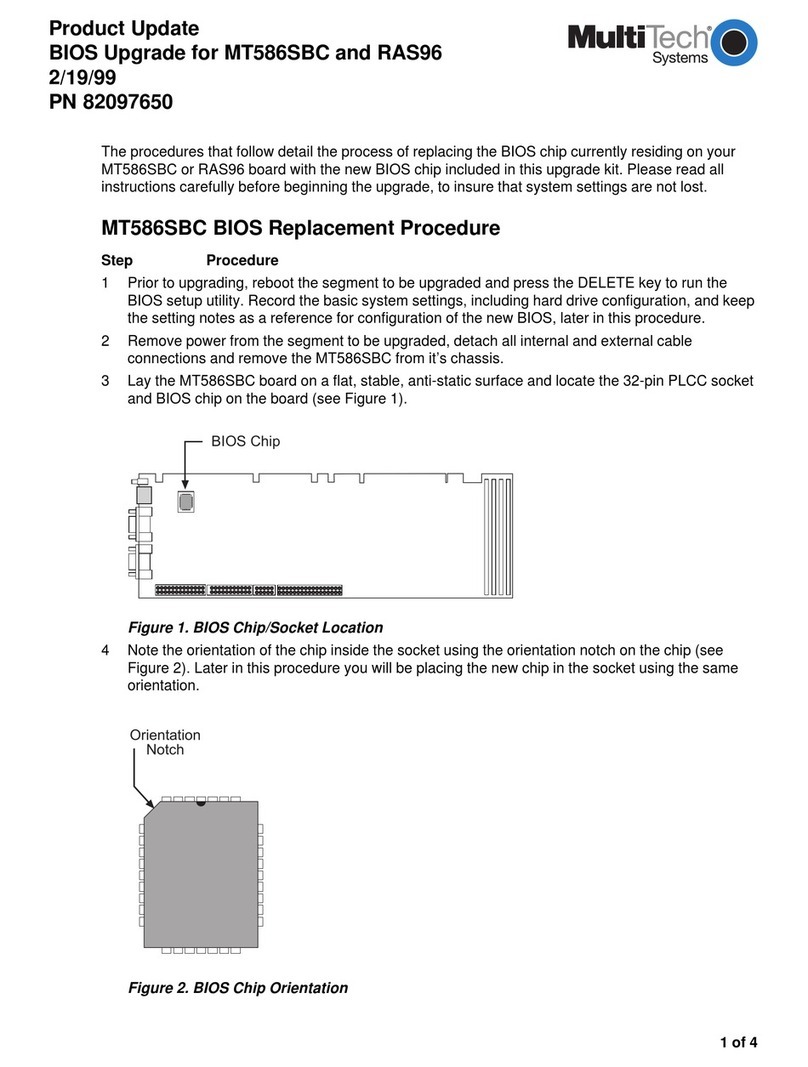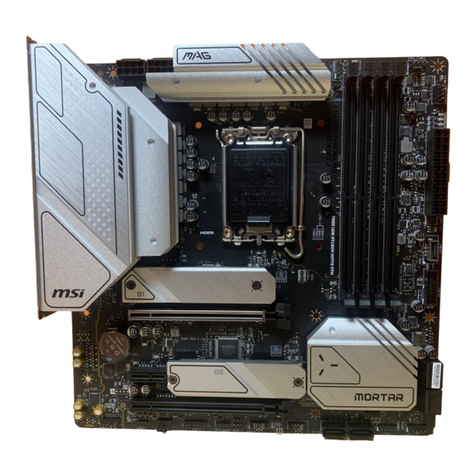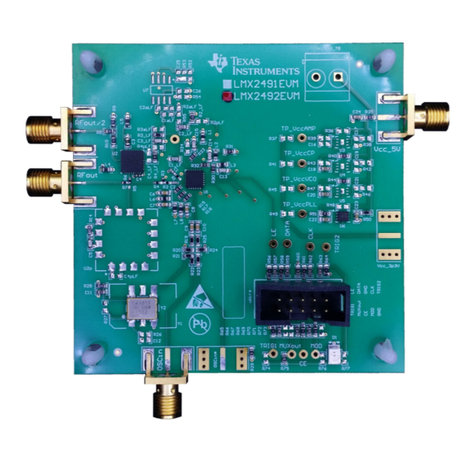Transtech Transputer User manual

Transputer
Motherboard User
Manual
Ref: TMB M 711

Document reference number TMB M 711.
Copyright 1997 Transtech Parallel Systems.
This publication is protected by Copyright Law, with all rights
reserved. No part of this publication may be reproduced, stored in a
retrieval system, translated, transcribed, or transmitted, in any form,
or by any means manual, electric, electronic, mechanical, chemical,
optical or otherwise, without prior written permission from Transtech
Parallel Systems.
Transtech reserves the right to alter specifications without notice, in
line with its policy of continuous development. Transtech cannot
acceptresponsibilitytoanythirdpartyfor loss or damage arising out
of the use of this information.
Transtech acknowledges all registered trademarks.
Transtech Parallel Systems Corp Transtech Parallel Systems Ltd
20 Thornwood Drive 17-19 Manor Court Yard
Ithaca Hughenden Avenue
NY 14850-1263 High Wycombe
USA Bucks, HP13 5RE
United Kingdom
tel: 607 257 6502 tel: +44 (0) 1494 464303
fax: 607 257 3980 fax: +44 (0) 1494 463686
http://www.transtech.com http://www.transtech.co.uk

TMB M 711 Transputer Motherboard User Manual i
Table of Contents
Chapter 1 Introduction 1
Chapter 2 Using Transputer Modules 3
2.1 Introducing TRAMs ................................................................. 3
2.1.1 Hardware Description .................................................... 3
2.2 Building a Computer from TRAMs .......................................... 7
2.2.1 Physically building the System ...................................... 7
2.2.2 Configuring the System ................................................. 8
2.3 A More Complex Example .................................................... 10
2.3.1 Control Aspects ........................................................... 10
2.3.2 Topology Aspects ........................................................ 11
2.3.3 Network Configuration Aspects ................................... 13
2.4 Summary ............................................................................... 14
Chapter 3 The TRAM Standard 17
3.1 Introduction ........................................................................... 17
3.2 The Transputer Module ......................................................... 18
3.2.1 Overview ..................................................................... 18
3.2.2 Functional Description ................................................. 18
3.2.3 Electrical Description ................................................... 21
3.3 The Transputer Module Motherboard ................................... 21
3.3.1 Overview ..................................................................... 21
3.3.2 Link Configuration ....................................................... 22
3.3.3 System Control ............................................................ 25
3.4 Host Computer Interface ....................................................... 30
3.4.1 Host IO Space ............................................................. 30
3.4.2 Link Interface ............................................................... 32
3.4.3 System Control Interface ............................................. 33
3.4.4 Interrupts and DMA ..................................................... 33
3.4.5 DMA & Interrupt Channels .......................................... 34

ii Transputer Motherboard User Manual TMB M 711
Chapter 4 The TMB03 Motherboard 35
4.1 Board Configuration Jumpers ................................................36
4.1.1 Control Configuration ...................................................37
4.1.2 Board IO Address ........................................................37
4.1.3 Link Speed Configuration .............................................38
4.1.4 Master and Slave Configuration ...................................38
4.1.5 IRQ & DMA Selection ..................................................40
4.2 The Edge Connector ..............................................................41
4.2.1 Use of the master link ..................................................43
4.3 Example .................................................................................43
Chapter 5 The TMB04 Motherboard 45
5.1 Fitting TRAMs ........................................................................46
5.2 Fitting memory .......................................................................46
5.3 Board Configuration Jumpers ................................................47
5.3.1 On-board transputer clock and memory ......................48
5.3.2 Control Configuration ...................................................49
5.3.3 Board IO Address ........................................................50
5.3.4 Link Speed Configuration .............................................51
5.3.5 Master and Slave Configuration ...................................52
5.3.6 IRQ & DMA Selection ..................................................52
5.4 The Edge Connector ..............................................................53
Chapter 6 The TMB08 Motherboard 57
6.1 Overview ................................................................................57
6.2 Network Configuration ...........................................................58
6.2.1 Electronic Link Configuration .......................................58
6.2.2 The Link Patch Area ....................................................60
6.2.3 Summary of Network Configuration .............................62
6.3 Description .............................................................................62
6.3.1 Board Configuration .....................................................62
6.3.2 IRQ & DMA Selection ..................................................64
6.3.3 The Edge Connector ....................................................65
6.3.4 The Link Patch Area ....................................................67
6.4 Examples ...............................................................................68
6.4.1 Stand-alone TMB08 .....................................................68
6.4.2 Multiple TMB08s ..........................................................69

TMB M 711 Transputer Motherboard User Manual iii
Chapter 7 The TMB12 Motherboard 73
7.1 Overview ............................................................................... 73
7.2 Description ............................................................................ 76
7.2.1 Board Configuration .................................................... 76
7.2.2 The P1 Edge Connector .............................................. 76
7.2.3 The P2 Edge Connector .............................................. 77
7.2.4 Other Hardware ........................................................... 81
7.3 Network Configuration ........................................................... 82
7.3.1 Electronic Link Switching ............................................. 82
7.3.2 The K1 Header Block .................................................. 86
7.3.3 The P1 Edge Connector .............................................. 87
7.3.4 Summary ..................................................................... 89
Chapter 8 The TMB14 Motherboard 91
8.1 Overview ............................................................................... 91
8.2 VMEbus Interface .................................................................. 93
8.2.1 Link Adaptor Registers ................................................ 94
8.2.2 Subsystem Control Registers ...................................... 95
8.2.3 Interrupt Control Registers .......................................... 95
8.3 Link and Control Configuration .............................................. 96
8.3.1 Links ............................................................................ 97
8.3.2 Subsystem ................................................................... 99
8.4 Board Setup ........................................................................ 101
8.4.1 VMEbus Interface ...................................................... 102
8.4.2 Link Speed Configuration .......................................... 102
8.4.3 Control Configuration ................................................ 103
8.4.4 Link configuration ...................................................... 104
8.4.5 Sysreset Lengthening ................................................ 105
8.5 Connector Pinouts ............................................................... 105
8.6 Programming ....................................................................... 112
Chapter 9 The TMB16 Motherboard 115
9.1 Overview ............................................................................. 115
9.2 Network Configuration ......................................................... 116
9.2.1 Electronic Link Configuration ..................................... 117
9.2.2 The Link Patch Area .................................................. 118
9.2.3 Summary of Network Configuration .......................... 120

iv Transputer Motherboard User Manual TMB M 711
9.3 Board Setup .........................................................................121
9.3.1 Control Configuration .................................................121
9.3.2 Board Address ...........................................................122
9.3.3 Link speed ..................................................................122
9.3.4 IRQ & DMA Selection ...............................................122
9.3.5 Reserved switches .....................................................123
9.4 The Edge Connector ............................................................123
9.5 Examples .............................................................................125
9.5.1 Stand-alone ................................................................126
9.5.2 Multiple TMB16s ........................................................126
9.5.3 Link Adaptor ...............................................................128
9.6 The Host Interface ...............................................................128
9.6.1 Operation of the Hardware .........................................129
9.6.2 Memory Maps ............................................................131
9.6.3 Operation of the Software ..........................................133
Chapter 10 The TMB17 Motherboard 135
10.1 Overview ............................................................................135
10.2 Windows 95 .......................................................................136
10.3 PCI Interface ......................................................................137
10.3.1 Hardware Description ..............................................137
10.3.2 Register Map ............................................................137
10.3.3 PCI Configuration .....................................................139
10.4 Network Configuration .......................................................139
10.4.1 Electronic Link Configuration ...................................139
10.4.2 The Link Patch Area ................................................141
10.4.3 Summary of Network Configuration .........................144
10.5 Description .........................................................................144
10.5.1 Board Configuration .................................................144
10.5.2 The Edge Connector ................................................146
10.5.3 The Link Patch Area ................................................148
10.6 Examples ...........................................................................149
10.6.1 Stand-alone TMB17 .................................................149
10.6.2 Multiple TMB17s ......................................................150
Chapter 11 Utilities Software 153
11.1 PC Installation ....................................................................153

TMB M 711 Transputer Motherboard User Manual v
11.2 Solaris 2 Installation .......................................................... 154
11.2.1 FORCE CPU-3CE ................................................... 154
11.2.2 FORCE CPU-5V ...................................................... 155
11.2.3 Software .................................................................. 155
11.2.4 Configuration File .................................................... 156
11.3 Environment Variables ...................................................... 157
11.4 Connection Database ........................................................ 158
11.5 Network test utilities .......................................................... 159
11.5.1 Link Switch Configuration ........................................ 160
11.6 The Inmos server program ................................................ 162
11.7 Transputer host I/O utilities ............................................... 162
11.8 Inmos Aserver Support ..................................................... 163
11.9 Solaris 2 Device Driver ...................................................... 164
11.10 Reference Manual Pages ................................................ 166
11.10.1 Commands ............................................................ 166
check(1)......................................................................... 166
ckmon(1) ........................................................................ 168
ftest(1) ............................................................................ 169
iserver(1) ........................................................................ 170
load(1) ............................................................................ 172
mtest(1) .......................................................................... 173
11.10.2 Linked Process Units ............................................. 175
hostmux(2)..................................................................... 175
iocache(2) ...................................................................... 179
11.10.3 Program Function Calls ......................................... 181
genio(3).......................................................................... 181
Chapter 12 Trouble-shooting 185
12.1 TRAM checklist ................................................................. 185
12.1.1 Reset ....................................................................... 186
12.1.2 Links ........................................................................ 186
12.1.3 Link speed ............................................................... 186
12.1.4 Analyse .................................................................... 186
12.1.5 Power ...................................................................... 186
12.1.6 Clock ....................................................................... 186
12.2 PC Host Interface .............................................................. 187
Index 189

vi Transputer Motherboard User Manual TMB M 711

Introduction
TMB M 711 Transputer Motherboard User Manual 1
Chapter 1
Introduction
This manual describes the Transtech transputer module (TRAM)
motherboards.
Chapter 2 gives an introduction to the concepts and
nomenclature of transputer modules. All
users should read this before attempting to
configure a TRAM motherboard.
Chapter 3 gives a detailed description of the TRAM
standard for modules and motherboards.
This chapter contains more advanced
information required for fault-finding,
designing compatible hardware or for
systems programming.
Chapter 4 describes the TMB03 low-cost
motherboard for PC.
Chapter 5 describes the TMB04 motherboard for PC
with transputer.
Chapter 6 describes the TMB08 motherboard for PC.
Chapter 7 describes the TMB12 double extended
eurocard motherboard.
Chapter 8 describes the TMB14 6U VME slave
motherboard.
Chapter 9 describes the TMB16 high performance
motherboard for PC.
Chapter 10 describes the TMB17 high performance
PCI motherboard for PC.
Chapter 11 describes the test software and utilities
provided with the boards.

Introduction
2Transputer Motherboard User Manual TMB M 711
Chapter 12 provides a detailed trouble-shooting guide.

Using Transputer Modules
TMB M 711 Transputer Motherboard User Manual 3
Chapter 2
Using Transputer Modules
This chapter contains a beginners guide to setting up and using
transputer equipment based on TRAMs. It discusses simple
configurations of transputers for the most popular programming
environments and how to link two motherboards together to
construct larger networks. If you have purchased a standard
configuration PARAstation it will already be configured for you and
the following should only be read to understand the concepts behind
your parallel processing system. For more detailed information refer
to Chapter 3
‘The TRAM Standard’
.
2.1 Introducing TRAMs
TRAMs are small assemblies based on transputers with a standard
electrical and mechanical interface. They plug onto standard
motherboards which in turn plug into or can be connected to a range
of host computers. This allows TRAMs and motherboards from
different vendors to be plugged into a wide variety of computing
platforms, giving the user the ability to construct a computing
machine which meets their requirements exactly in terms of
performance and IO function.
2.1.1 Hardware Description
This section contains a description of the transputer hardware which
allows users unfamiliar with TRAMs to understand the installation
procedure described in the next section.
The smallest size of TRAM measures about 3.5" long by 1" wide
(10cm by 2.5cm). This is called a Size 1 TRAM. The size of larger
TRAMs is always a multiple of the Size 1 TRAM. The size 1 TRAM

Introducing TRAMs
4Transputer Motherboard User Manual TMB M 711
has 16 pins which plug into sockets on the motherboard. TRAMs are
marked in one corner (pin 1) for orientation purposes. See figure 1.
Some TRAMs have a subsystem - this consists of three zero profile
sockets mounted on the underside of the TRAM in one corner
(always next to pin 1). Only slot 0 on the motherboard has the
capacitytoacceptthesubsystemfromsuchaTRAM.Figure2shows
Pin 1
TRAM pins
Subsystem
Size 2 TRAM
Size 1 TRAM
Figure 1. Transputer Modules
Pin 1

Using Transputer Modules
TMB M 711 Transputer Motherboard User Manual 5
how to used the supplied double ended connector to plug these
sockets into similar sockets on the motherboard.
Because of the way the subsystem connects to the motherboard it is
not compulsory to perform this connection if it is not needed and
hence TRAMs with subsystem can plug into any socket on the
motherboard.
The location where the TRAM plugs onto a motherboard is called a
slot or site. Slots are numbered from zero. Figure 3 shows a slice of
a typical motherboard. Note that the slots are not all oriented the
samewayandthatthe orderingof slotsisnot contiguous.Thisallows
better utilization of the motherboard when plugging in TRAMs of
different sizes.
The motherboard is specially wired so that if it is populated with size
1 TRAMs then the transputers are all connected in a pipeline. This is
Module
Motherboard
zero profile sockets
3-way double ended
header strip
Figure 2. Subsystem Port Connections
s4 s5 s2 s0 s3 s6
Figure 3. TRAM slots on a motherboard

Introducing TRAMs
6Transputer Motherboard User Manual TMB M 711
achieved by connecting link2 of one transputer to link1 of the next
transputer. See figure 4.
TRAMs which are larger than size 1 do not use all of the sites
underneath them. The only active site is the one below pin 1 of the
TRAM. This means that the pipeline is broken at the unused slots
underneath the TRAM. To bridge these breaks a special pipe jumper
can be used. Figure 5 shows a pipe jumper.
Slot0 Slot1 Slotn
PipeHead PipeTail
L1 L2 L1 L2 L1 L2
Figure 4. The Default Transputer Pipeline
Pin1
Marker
Figure 5. Pipe Jumper

Using Transputer Modules
TMB M 711 Transputer Motherboard User Manual 7
Pipejumpersare pluggedinwiththesameorientationasTRAMs,i.e.
with their pin1 adjoining the orientation mark on the motherboard.
Figure 6 shows a situation in which a pipe jumper may be needed.
The diagram shows slot 3 being covered by a large TRAM. If it is
required to continue the pipeline on beyond slot 3, in this case there
is a TRAM in slot 4, then slot 3 will need to be jumpered.
2.2 Building a Computer from TRAMs
This section describes the setting up of a simple system consisting
ofanumberof transputersonasinglemodulemotherboard.Building
the system consists of three main stages:
1. Plug the TRAMs onto the motherboard,
2. Configure the motherboard reset structure for the software devel-
opment system or application being used,
2.2.1 Physically building the System
Transputer modules and motherboards contain components which
can be damaged by static electricity. It is therefore advisable to take
some simple precautions before handling TRAMs and module
motherboards:
• keep the TRAM plugged into its anti-static mat when it is not
plugged onto a motherboard,
• keep module motherboards in their anti-static bags when they
are not in use,
• before handling TRAMs or motherboards ground yourself by
touching an earth (the metal enclosure of electrical equipment is
always earthed),
s4 s5 s2 s0 s3 s6
Size 2 TRAM
Pipe jumper in slot 3
Figure 6. Using pipe jumpers
covers slot 3

Building a Computer from TRAMs
8Transputer Motherboard User Manual TMB M 711
• try to avoid touching the TRAM pins when plugging them in.
Plug the TRAMs into the motherboard slots as required by your
application. When doing this note that:
• TRAMs should be oriented the correct way round to avoid
permanent damage,
• if you are using the occam TDS, or the interactive debugger
supplied with the Inmos C or occam toolsets, you will need to
connect the subsystem on the TRAM that plugs into slot 0,
• TRAMs are shipped with spacers attached to their pins to raise
them above any components on the motherboard. When there
are no components on the motherboard these spacers can be
removed if you wish to lower the height profile of the
motherboard/TRAM combination. However please bear in mind
that adequate airflow under the TRAM is required for cooling.
See figure 7.
2.2.2 Configuring the System
The next stage is to set all the configuration options of the board.
Normally, the only options which have to be considered are the
control structure and the transputer network.
Thefollowingsectionsdiscusstherelevantoptions without reference
to a particular motherboard. For details of the actual
jumpers/switches to set refer to the hardware chapter in the product
specific section of this document.
2.2.2.1 The Control Structure
In order to be able to program and use the TRAMs on the
motherboard there is a mechanism for their control. The most
important control signal sent to a TRAM is the reset signal. When a
TRAM receives this signal, the transputer is reset to an initial state.
Module
Motherboard
Spacer
Figure 7. TRAM spacer
Components

Using Transputer Modules
TMB M 711 Transputer Motherboard User Manual 9
The transputer has to be in this state before a user program can be
loaded onto it.
There are two basic control architectures that are commonly used:
• the host computer controls all of the processors in the system.
This configuration is suitable for the Inmos toolsets and 3L
scientific languages where the various tools in the programming
environment (compilers, linkers etc.) are invoked from the host
computer. Figure 8 shows what this looks like.
• the host computer controls only one transputer - the root or
master transputer. This configuration is suitable for occam TDS
users and also for Inmos toolset users who wish to use the
interactive debugger, where a program (i.e. the TDS) runs on the
master processor while other processors in the network are
controlled from the master processor’s subsystem port and are
called a subnetwork. This enables TDS or the interactive
debugger to boot/debug the other processors. Figure 9 shows
the situation.
In order for the host computer to be able to control any transputers
the motherboard or transputer host interface board must be set up
correctly. See the relevant manual for your host
adaptor/motherboard.
control
TRAM 0
host
TRAM 1 TRAM n
Figure 8. Control architecture for 3L/toolset
control
TRAM 0
host
TRAM 1 TRAM n
subsystem control
Figure 9. Control architecture for TDS

A More Complex Example
10 Transputer Motherboard User Manual TMB M 711
2.2.2.2 The Transputer Network
The only thing to be done here is to put in pipe jumpers where they
are needed. Some simple rules for determining when pipe jumpers
are needed follow:
1. If a large TRAM (greater than size 1) is in the middle of your
intended pipeline then the large TRAM will need its unused slots
jumpering.
2. If your motherboard is not fully populated and you wish to
continuethe pipeline onto another motherboard, then the unused
slots on the motherboard will need jumpering.
2.3 A More Complex Example
This section shows how you could build up a TRAM network based
on a number of motherboards. A common example of this is driving
a number of slave TMB12 boards from a motherboard inside a PC.
The TMB12 doesn’t have a host computer interface and therefore
has to be slaved to a master.
There are three aspects to connecting up several motherboards:
1. Sorting out the control system
2. connecting up the transputers
3. connecting up the configuration pipeline
2.3.1 Control Aspects
The control architecture of the single motherboard now has to be
connected to other motherboards. Each motherboard has three
control ports for this purpose. They are called
subsystem
,
up
and
down
.
Themotherboards will normally be connected into a chain. Control is
fed into the up port of a board. Normally control is propagated out of
the down port. Hence, to connect up a chain the up port of one board
is connected to the down port of the next board.
The only exception to this rule arises when the first motherboard in
the system is considered. In this case it is desired to control a
subsystem from the master processor and the TRAMs on the slave
boards should be part of that subsystem. The subsystem port has
been provided for just this situation.

Using Transputer Modules
TMB M 711 Transputer Motherboard User Manual 11
Figure 10 shows a reset cable which is used to connect the control
ports of different boards together.
Figure 11 shows the control connections for the simpler case of the
3L languages and figure 12 shows the connections for users of the
occam TDS or Inmos toolsets.
2.3.2 Topology Aspects
In order for the transputers to communicate their links must be
connected together. In keeping with the pipeline connections made
within a single motherboard, when several motherboards are wired
up, all the transputers are connected into a single pipeline.
Figure 10. Reset Cable
Down/Subsystem Up
reset
error
analyse
Figure 11. Control in multi-motherboard systems
up down
TMB12
up down
TMB12
down
HOST
Figure 12. Control in multi-motherboard systems (TDS)
up down
TMB12
up down
TMB12
SubSystem
HOST

A More Complex Example
12 Transputer Motherboard User Manual TMB M 711
This is achieved by connecting the end of the pipeline of one
motherboard to the beginning of the pipeline on the next
motherboard.
The start of the pipeline (slot 0 link 1) is called
PipeHead
. The end of
the pipeline (slot n link 2) is called
PipeTail
. Hence you must connect
the PipeTail of one board to the PipeHead of the next board.
BecausethePipeTail toPipeHeadconnectionisactuallyatransputer
link,the cableused tomakethisconnectionis a standardINMOSlink
cable. See figure 13.
Figures 14 & 15 illustrate the required connections.
Figure 13. Standard link cable
ground
out
in
ground
ground
out
in
ground
PipeHeadPipeHead
Figure 14. The default pipeline in multi motherboard systems
PipeTailPipeTail
up down
TMB12
up down
TMB12
down
HOST
Table of contents
